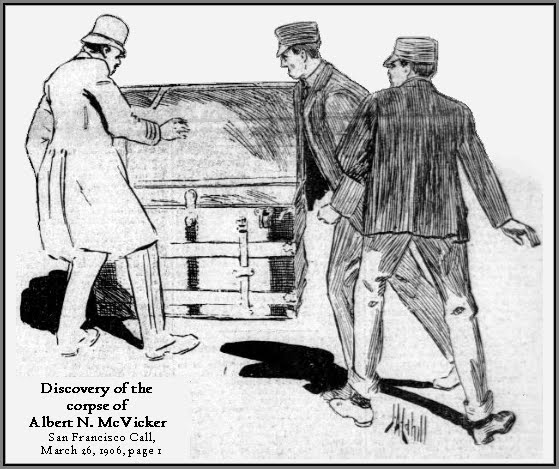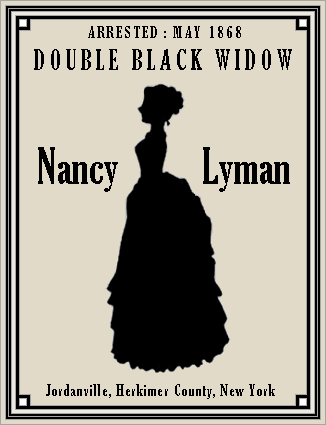3 deaths:
Jun. 25, 1974 – Richard Pipes, Santa Cruz, Ca.
Jul. 12, 1974 – Louis McNamara, Hillsborough, Ca.
Jul. 17, 1974 – Stephen Russell, Idaho.
***
FULL TEXT (Article 1 of 4): With a nervous smile and a shrug
of his shoulders, Barry Austin Brown, 21, received his second life sentence of
the day Tuesday from Superior Court Judge Gilbert Perry for the June 25 slaying
of Richard Pipes, a 7-11 store clerk.
Brown, a former Santa Cruz resident, received the sentence
on top of an earlier lifetime term handed down by San Mateo Court Judge Gerald
E. Ragan for the slaying of Louis McNamara of Hillsborough on July 12 and
Stephen Russell of Idaho on July 17.
Brown pleaded guilty to all three murders on the condition
that special allegations that would qualify him for the death penalty be
dropped on Oct. 1.
His co-defendant, Carol Campbell, is scheduled for trial
Dec. 2 in San Mateo County. She has pleaded innocent to all three murder
charges.
Brown's sentencing lasted no more than five minutes before a
small audience and was preceded by joking with a newsman in the audience.
The prison-garbed Brown said nothing after his sentence.
He is being sent to state prison to serve his term, and was
turned over to the San Mateo Sheriff's Department after sentencing.
Pipes was killed June 25 after a $70 robbery of a 7-11 food
store on Cardiff Place.
Socialite McNamara's death was linked to Brown after her
blood splattered car was found abandoned at San Francisco International
Airport. Her body was later found in a steep gully near Redwood City.
Russell, an ex-sailor, was killed July 17 after Brown picked
him up as he was hitchhiking along Highway 1. His body was found in a gully off
Tunitas Creek.
[“Brown Gets Second Life Term,” Santa Cruz Sentinel (Ca.),
Oct. 17, 1974, p. 18]
***
FULL TEXT (Article 2 of 4): Carol Campbell, the woman who
was arrested last summer in connection with three murders, was sentenced to
three to 24 years in the state prison Wednesday at a court hearing in San Mateo
County.
She still must face charges in Santa Cruz in connection with
the June killing of a Santa Cruz 7-11 food store clerk. Her boyfriend, Barry
Brown, has already been sentenced to the state prison after entering guilty
pleas in both San Mateo and Santa Cruz County.
The Associated Press reported that Campbell pleaded guilty
to two counts of accessory and to forging a $1,500 check of one of the murder
victims.
She admitted hiding the gun used by Brown in killing
Hillsborough socialite Lois Jean McNamara, 57, last July and a discharged Navy
man, Stephen Russell, 22, five days later.
Charges of murder against Campbell were dropped. She will
appear in Santa Cruz next week to face the third murder charge.
Campbell's attorney contended that she should not be sent to
prison because she cooperated with police. AP reported, but Superior Court
Judge William Lanam rejected the argument, saying her statements indicated that
she "is a pathological liar."
[“Campbell Sentenced To Prison,” Santa Cruz Sentinel (Ca.),
Jan. 16, 1975, p. 28]
***
FULL TEXT (Article 3 of 4): Carol Campbell, 27, arrested
last summer in connection with the shooting death of a 7-11 food store clerk
in Santa Cruz, was sentenced today to state prison.
She had pleaded guilty to a charge of being an accessory to
the killing.
Her co-defendant, Barry Brown, 21, of San Carlos, has
already been convicted of three counts of murder and is serving a life sentence
in state prison.
Campbell and Brown were arrested last summer in connection
with the slaying of Richard Pipes, a food store clerk.
They were also charged in San Mateo County with the murders
of Lois Jean McNamara, 57, of Hillsborough, and Stephen Russell, 22, a
hitchhiker.
Campbell pleaded guilty to being an accessory to the three
murders, and also to forging a personal check of McNamara's.
Superior Court Judge Donald May today ordered that
Campbell's five - year maximum sentence run consecutively with sentences
already handed her in San Mateo County. Asst. Dist. Atty. Bill Kelsay commented
after the court hearing today that Campbell could spend as much as 20 years in
custody.
Campbell's attorney, Larry Biggam of the public defender's
office, argued that the Santa Cruz sentence should run concurrently with the
San Mateo sentences. He commented that realistically there is no difference in
consecutive and concurrent sentences, and the only reason judges impose the
former is to "raise a red flag" in warning to prison authorities that
the defendant is involved in a serious crime. The raising of that flag was
achieved when the San Mateo County judge sentenced his client to consecutive
terms, he reasoned.
His argument fell on deaf ears, however. May said the Santa
Cruz offense had nothing to do with the San Mateo killings, so they should be
treated separately.
[“Campbell Gets Prison Sentence,” Santa Cruz Sentinel (Ca.),
Feb. 11, 1975, p. 10]
***
EXCERPT (Article 4 of 4): On July 21, 1974, Brown and
Campbell were arrested in San Mateo County on suspicion of murder in connection
to the three homicides. The two were arraigned first in San Mateo County and
then in Santa Cruz County for the murders.
Brown eventually pleaded guilty to murder in all three
homicides and was sentenced to two life sentences.
Campbell would plead guilty to amended charges of being an
accessory to murder and other charges for her role in the murders. She was
sentenced to three to 24 years for charges in the San Mateo County murders and
five years for the Santa Cruz County murder.
Prosecutors David Sherman and Conor McCormick attended the
parole hearing at Vacaville State Prison to argue against Brown’s release.
Brown, who served 40 years of a life sentence, explained he
was only 21 at the time and was under the influence of drugs and alcohol.
Though he confessed to the murders in 1974, Brown now claims Campbell pulled
the trigger in all three murders.
The board ultimately denied parole and Brown will not be
eligible to apply for the next five years.
[Calvin Men, “Man convicted in Santa Cruz County of three
1974 murders denied parole,” Santa Cruz Sentinel (Ca.), Jan.16, 2015]
[1787-1/4/21]
***


















































